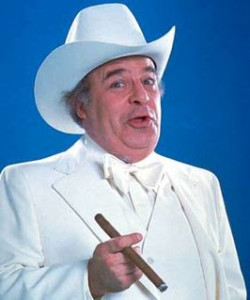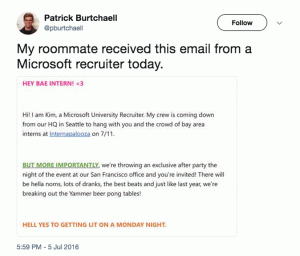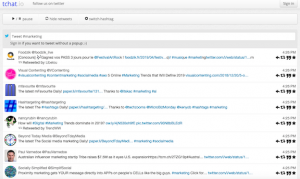If there’s one thing I’ve learned in my eight years as a CEO, it’s that I don’t have all the answers.
What CEO does?
The fact is, successful company heads are good at knowing what they don’t know. They ask the right questions, listen, collaborate, and understand that going both broad and deep in gathering information is more important than presuming to have all the answers themselves.
That is why so many CEOs seek to practice immersive leadership, an approach that emphasizes active engagement with key stakeholders—especially employees and customers—rather than merely directing from on high. It’s rolling up your sleeves and leaning in to participate as an active team member on specific problems.
Striving to grasp the experiences of others provides clarity that is often obscured from a bird’s-eye view. Authentic appreciation of what it’s like to buy from or work for a company usually comes from being on the ground, amid the action.
I’m not talking about micromanagement. Any CEO worth their salt is effective at delegating responsibilities, and they empower and trust team members to make and own key decisions.
But immersive leaders prioritize gaining an in-the-trenches understanding of the specific needs of their customers, organizations, employees, and markets. They make it a guiding philosophy every day.
The immersive style is often associated with qualities such as empathy (a desire to understand others’ perspectives firsthand) and adaptability (an openness to change based on what the CEO sees and hears).
In trying to cultivate these qualities in myself, I draw inspiration from strong role models.
My mother was a nurse in a long-term care facility, mostly for elderly people, and exhibited true empathy more than anyone I’ve ever known.
Then there are the many industry titans who are considered pioneers of immersive leadership.
Amazon’s Jeff Bezos was known to maintain a public email address, jeff@amazon.com, and forward customer feedback to executives. He also would leave an open chair in executive meetings to represent the customer, a symbolic reminder of the most important person in the room.
Virgin Group’s Richard Branson was known for his hands-on approach, believing that leaders should be highly visible and constantly engaging with employees. “Walk the floor, get to know your people,” he once said. “Even though I don’t run Virgin’s companies on a day-to-day basis any more, I still find it crucial to get out and about among our staff.”
In 2008, recently reappointed Starbucks CEO Howard Schultz closed all of the chain’s U.S. stores for three hours to retrain baristas on making the perfect espresso, an art he felt employees had lost touch with and contributed to declining sales. Five years later, Starbucks revenue had increased 54 percent.
More recently, Uber CEO Dara Khosrowshahi made headlines when he secretly moonlighted as a driver for several months in San Francisco. It wasn’t just a stunt but an effort to personally observe on-the-ground realities that often remain unseen from corporate suites. Khosrowshahi later said the experience forced him to “reexamine every single assumption that we’ve made.”
Examples from my own career may not seem as dramatic, but one in particular stands out. For several weeks, I joined our sales team in their daily interactions. On these calls, I thought of myself not as just the CEO but as a fellow team member, absorbing feedback, navigating issues, and celebrating successes.
By putting myself in the salespeople’s shoes, I felt what they were feeling, not just heard what they were saying. I saw what was working well and what could be improved. I also gained a new appreciation for how passionate these folks are about their jobs.
Another example: For about as long as I’ve been a CEO, I’ve carved out some weekend time to send an email every Monday morning to the company that recognizes the previous week’s achievements and lays out my thoughts about the week ahead. I find this a great way for us all to stay connected on our company’s mission.
I do these things because, in important ways, immersive leadership has never been more vital.
Brand loyalty is constantly shifting
As a PwC report put it, “Volatility in consumer behavior is at an all-time high. The COVID-19 pandemic fundamentally changed many needs and preferences. Inflation and a turbulent economy are influencing buying decisions. Technology creates unprecedented connectivity and access to goods and services.”
Thus, a CEO who fails to do everything possible to keep their finger on the customer pulse is risking big trouble.
These also are volatile times in the workplace
Forty-four percent of employees worldwide told a Gallup survey that they experienced a lot of stress the previous day—the second consecutive year that worker stress reached record levels.
Work stress has been rising for years, but a new phenomenon has emerged: quiet quitting, a situation in which an employee psychologically disengages from their job and quietly reduces their effort without formally expressing dissatisfaction.
A CEO who practices immersive leadership can set a tone that excites employees, connect dots that help them realize why their work matters, and help remove organizational obstacles getting in the way of their happiness.
In 2024, I’ll continue to challenge myself to dive deep, to go beyond the spreadsheets and boardroom discussions that can consume CEOs, and stay immersed in the areas that drive our business forward.
Another way I’m thinking about it: My youngest brother, Marty, is a successful guitar maker in Nashville. He understands how critical it is for an instrument to stay in tune.
A CEO should be no different.
(25)
Report Post







